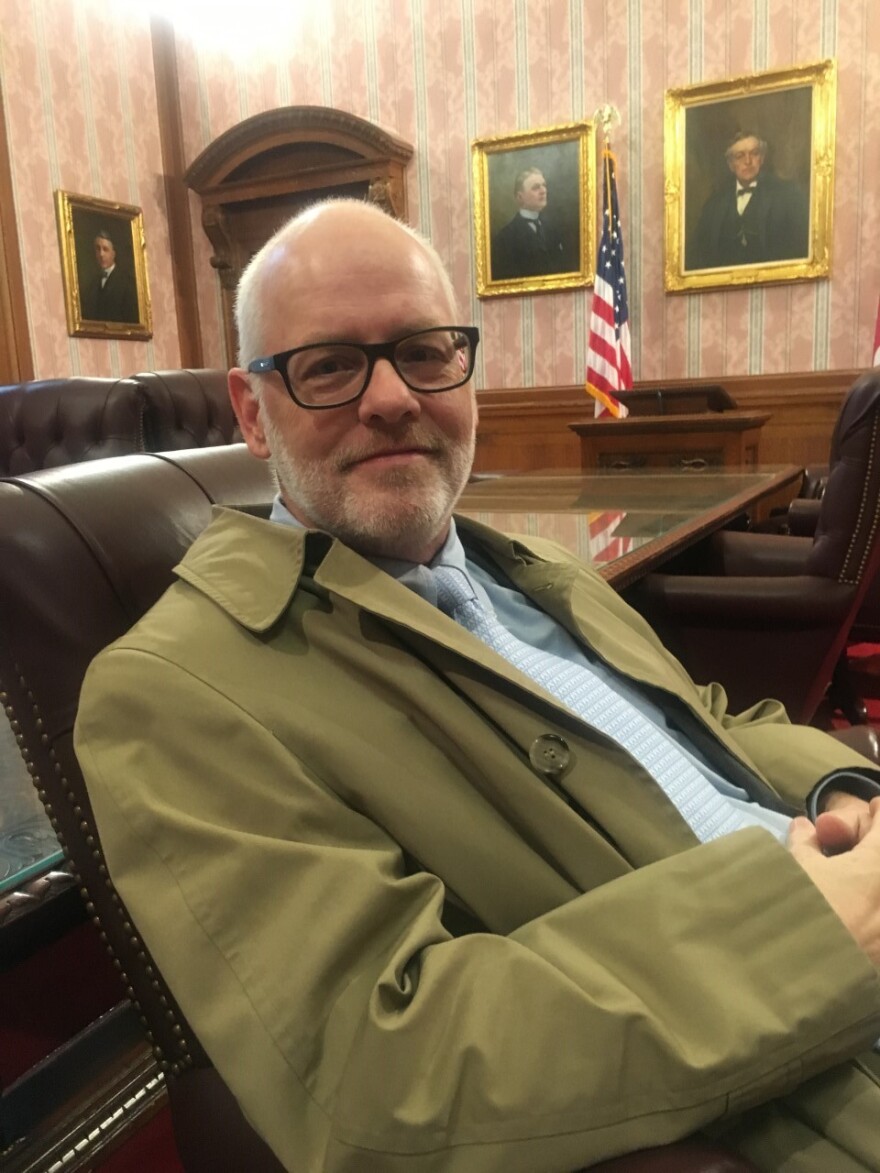Cleveland now has a cabinet-level chief to guide its new youth-violence prevention team.
Today Mayor Frank Jackson announced the appointment of Cuyahoga County’s lead juvenile division prosecutor, Duane Deskins, to the position. As WKSU’s Kevin Niedermier reports, Deskins will run a program that will attempt to cut youth violence by coordinating new and existing resources.
Mayor Frank Jackson’s youth-violence prevention effort is an attempt to bring together public and private programs that work and to identify gaps that need to be filled. It includes a team of law-enforcement officers, crime analysts and intervention specialists
Jackson says a coordinated effort is the only way to make real, sustainable progress. And he says that starts with giving Duane Deskins the power to make that happen.
“This not going to be someone just running a program. This is a cabinet-level position that is higher than a director. This will be a chief, a chief. And his title will be Chief of Prevention, Intervention and Opportunity for Youth and Young Adults.”
'The ripple effect will help everybody throughout this area.'
A question of resources
Before working for Cuyahoga County’s juvenile justice system, Deskins was a U.S. attorney. While with the Justice Department, he helped develop a widely used violence prevention program that identifies high crime areas with few resources and finds partners to help. Deskins says it will serve as the basis of the work done in Cleveland.
“We’ve done this before. That’s what made that program so successful in and around the country. ... We don’t always have to have it led by the Department of Justice. There is nothing that stops this city and administration from doing the exact same thing for the benefit of the people here. And indeed, the ripple effect will help everybody throughout this area.”
Deskins says Cleveland has the tools to reduce youth violence, and the key looking at the problem from all angles, and not just providing band aids.
“If you’re talking about housing, employment, if you’re talking about public health, medical, you’re talking about education.
"And what the mayor’s vision is, I think -- and I share that completely and have for a long time -- is that we would all be better served both financially and in terms of outcomes if we all collaborated. And that’s with the business community; that’s where the job creation sustainability comes from -- investing in our community and most importantly investing in our young people.
"You look around and you ask: 'How many of these kids 16 to 25 have a meaningful place to work?' We’re trying to find ways to create those pathways for them.”

Proactive policing
Reducing young people’s exposure to crime is also part of the plan. And Mayor Jackson is dispatching new police unit to do that. Deputy Police Chief Wayne Drummond is helping coordinate the effort.
“Proactively identify violent crime areas through the crime analysis unit, the community, district commanders. The members assigned to this particular squad will and shall constitutionally and professionally police these area identified by those particular units ... by means of uniformed and plain-clothes operations.”
Drummond says this operation will also include reaching out to community members and forging relationships that can help prevent crimes from happening in the first place.
Cleveland’s youth-violence prevention program is part of an effort to build a comprehensive plan that started in 2014. The city is one of 15 nationwide that started working with the National Forum on Youth Violence Prevention.
Case Western Reserve University sociology professor Dan Flannery heads the school’s Begun Center for Violence Prevention, Research and Education. He helped Cleveland develop its program, and will help with implementation and tracking of outcomes. Flannery says there are promising initiatives in place, like the fledgling youth intervention program in hospital emergency rooms. But he says there are gaps that need to be filled.

“We have a lot of things going on for our very youngest people in prevention and our schools and the transformation plan, etc. We don’t have as many things available for individuals 15- to 25-years-old who make up the largest percentage of perpetrators and victims of violence.
"So with respect to when they show up in emergency rooms as victims of intentional injury, violence, what are we doing to try to help them, not just medically, but with respect to those incidents, to the recidivism that often occurs in terms of retaliatory incidents that occur, etc.?”
Funding for Cleveland’s new youth violence prevention program comes from the city income tax increase voters passed in November. Mayor Jackson has allocated more than $1.5 million to the effort.









